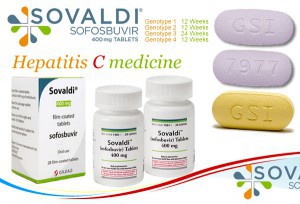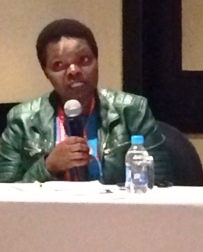Excellent partnership between the government, key stakeholders, and the community has helped Ethiopia rise to the tectonic challenge of HIV. Since 1990, more than 90% reduction in new HIV infection has been recorded. Survival of HIV-positive individuals has substantially improved. At present, about 70% of HIV-positive people in the country know their status and 65% are on treatment
by Taye Tolera Balcha, MD, MPH, PhD
Director General, Armauer Hansen Institute (AHRI)
Could HIV be the Youngest Disease to be Eliminated? The Experience of Ethiopia
About 100 million people live in Ethiopia. Of these, three-quarters of a million are HIV-positive. National HIV prevalence among pregnant women showed significant decline, from 5.3% in 2005 to less than 1% today. Implementation of combination of interventions at community and health facility levels is the driving force for this unprecedented drop. Even now, there is a wide variation in HIV prevalence between different geographies and population groups in the country. Regions like Gambella and population groups including female sex workers have substantially higher rate of the disease than the rest of the regions and population groups in the country, respectively. Further, some diseases are traditionally used as surrogate markers of HIV infection. About 10% of tuberculosis patients nationwide, for instance, are HIV-positive. While the major behavioral driver of the epidemic is unsafe sexual practice, young women and girls are excessively affected.
What worked well in Ethiopia?
A combination of tailored HIV prevention strategies were implemented among diverse population groups. Early on, regular sessions of community conversations were conducted at each village in the country. The core messages in the late 90s and early 2000s were HIV prevention, voluntary counseling and testing, and fighting stigma and discrimination among positives. As treatment was practically out of reach, clinicians were able to treat only few opportunistic infections as the disease progresses ensuing mostly death.
Concurrent with major global advances in the field of HIV, however, HIV messages in Ethiopia showed significant evolution. The Health Extension Workers (HEWs), anchored within each community since 2004, repurposed the messages adding the newfound benefits of getting tested and linkage to care and treatment for positives. This was a monumental development in the field which turned HIV from a capital punishment to a chronic disease. It not only dented the upward spiral of the pandemic, but assured citizens that HIV was no more considered a national anxiety.
While the development of HIV treatment was a game changer in its own right, we are far from ending AIDS for good. Recently, an organized community movement, Health Development Army (HDA), took charge of their own health, fighting public health threats including HIV. Several communities in the country established Community Care Coalition (CCC) as a mechanism for nutritional and other support for HIV-positive members of their communities. CCC is a component of broader Solidarity Fund established by HDAs aiming at covering everyone in the community with available health and related interventions.
Since community systems are not robust in urban settings, health facilities play crucial role in HIV prevention and early care and treatment. Also, the roles of HIV-positive individuals and associations in HIV prevention, care and treatment is much more amplified in urban settings. Matching an accelerated industrialization, development projects are heavily engaged in HIV prevention and treatment efforts targeting their workforce. In this regard, a dynamic partnership between the health sector and an array of sectors engaged in development has been proved vital to intercept HIV transmission and provide treatment for positives, and as a consequence minimize productivity loss due to the disease.
HIV care and treatment
Like several other low-income countries, Ethiopia scaled up antiretroviral treatment (ART) in 2005. In 2006, the access to treatment was further expanded involving hundreds of health centres mainly staffed by non-physician clinicians. Concurrently, Ethiopia rolled out coordination and networking mechanisms for HIV treatment monitoring laboratory facilities to track disease progression and response to treatment. Free diagnosis and treatment of all HIV-associated conditions was included in the essential health service package of the country to ensure unhindered access to comprehensive services to everyone in need.
To maximize healthy and productive retention in care and treatment, the health sector established sustained partnership with HIV-positive individuals and associations. Associations of HIV-positive individuals have been in charge of treatment adherence counseling, early tracing and encouraging re-engagement into care and treatment in cases of loss to follow up. Similar efforts have been made to bridge the chasm in recommendations by modern providers and religious platforms and traditional healers. The health sector has been effective in convincing major religions in the country that medical and spiritual treatments are not incompatible. The case of co-administering HIV medicines and Holy Water is seen as one of the most successful strategies for treatment adherence and retention in care in the country. Holy Water is considered ‘a cure for major diseases’ among followers of the major religious denomination in Ethiopia.
Achievements to date and new initiatives
Since 1990, more than 90% reduction in new HIV infection has been recorded. Survival of HIV-positive individuals has substantially improved. At present, about 70% of HIV-positive people in the country know their status and 65% are on treatment. Globally, 60% of HIV-positive individuals know their status and 46% of positives receive treatment.
The UNAIDS three 90s (identifying 90% of HIV-positives, linking 90% of the positives to treatment and viral suppression in 90% of those on treatment) by 2020 and the global commitment to end AIDS by 2030 has spurred the progress. Coherent with these global commitments, there are several revitalization efforts dealing with both prevention and treatment. With determined focus to end AIDS as public health threat in 2030, the health sector has intensified inter-sectoral collaboration, mayoral forums and expanded media campaign. In partnership with key stakeholders, the Ministry of Health recently launched HIV Catch up Campaign to accelerate testing the right people and link all positives to treatment. A total of 178 towns and cities have been selected for targeted testing and treatment strategies including rights-based partnership with index cases.
Other potentially game changing initiatives include instituting regular surveillance targeting workforce of large development projects to tailor prevention efforts, to understand active transmission dynamics and promote early and sustained treatment for positives. Ethiopia has also adopted the new paradigm of treating all HIV-positive people. Further, a new national compassionate and respectful care initiative will minimize stigma and discrimination and boost retention on treatment.
Conclusion
Excellent partnership between the government, key stakeholders particularly the US President’s Emergency Plan for AIDS Relief and the Global Fund, and the community has helped the country rise to the tectonic challenge of HIV. The Ethiopian experience shows that we have to accelerate our efforts to end AIDS for good. Although we might be far from new discoveries like HIV vaccine or cure, it is possible that the battle against AIDS could be won using the weapons we have. It is also possible that HIV could be the youngest disease to be eliminated in the history of humankind.








